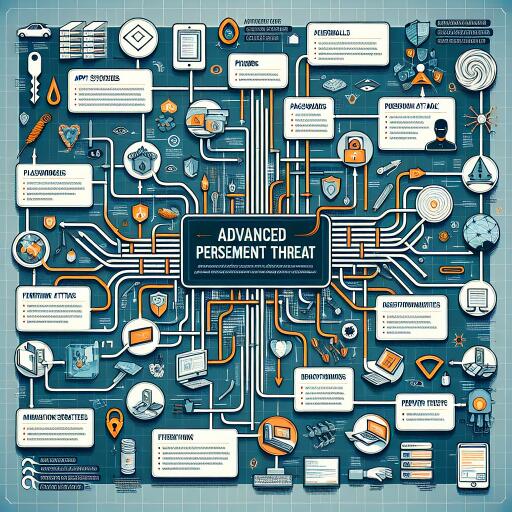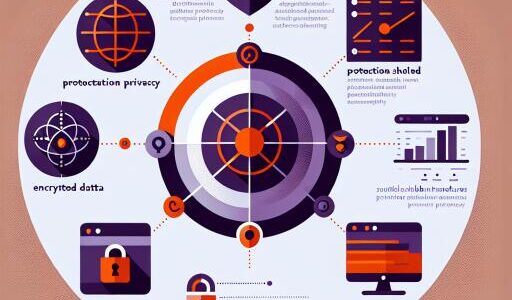Understanding and Mitigating Advanced Persistent Threats (APTs): A Comprehensive Security Approach
In the realm of cybersecurity, the term Advanced Persistent Threats (APTs) refers to intricate and targeted cyberattacks. These attacks are not just sophisticated; they are characterized by their goal of staying undetected within a target’s network to steal data over long periods. APTs represent a significant threat due to their potential to inflict serious damage by stealing a wide array of sensitive information ranging from intellectual property and financial records to customer personal details.
Given the severity of these threats, it is crucial for organizations of all sizes to develop a deep understanding of APTs, recognize how they function, and implement robust strategies to protect themselves.
APT Characteristics and Historical Incidents
APTs distinguish themselves through several key features: They are selective, focusing on specific targets; they are long-lasting, as attackers invest considerable time and resources in their operations; they are stealthy, designed to avoid detection; and they are complex, often involving sophisticated methods to breach networks.
Renowned incidents serve as stark reminders of the danger posed by APTs. The Stuxnet attack, aimed at Iran’s nuclear facilities in 2010, demonstrated the power of an APT to inflict physical damage. Operation Aurora in 2009 exposed the risks of intellectual property theft, targeting tech giants and marking a pivotal moment in the understanding of cyber espionage. More recent examples, like the large-scale Equifax data breach of 2017, underscore the immense personal and financial repercussions of these attacks.
The APT Attack Life Cycle
An APT attack unfolds in stages, starting with reconnaissance, where attackers gather valuable information on their target. Following this, they move to gain access through vulnerabilities, then establish a foothold within the network. Once embedded, attackers explore the network, looking for valuable data and ways to expand their control. The culmination of this process is the exfiltration of stolen data, all while employing techniques to avoid detection.
APT Threat Actors: Profiling the Adversaries
Attackers behind APTs often come from well-funded and highly skilled groups, including nation-states seeking intelligence, organized crime syndicates after financial gains, and even hacktivists driven by ideological motives. Uncovering the motivations and methods of these actors is vital for developing defenses against them.
Targets in the Crosshair
APTs do not discriminate much in their choice of targets. Government entities, corporations across various sectors, critical infrastructure, NGOs, academia, and even individuals can find themselves targets based on the strategic objectives of the attackers. Understanding who is at risk helps in tailoring defensive strategies.
Countering the APT Threat
Defending against APTs requires a strategic, multi-layered approach. Organizations must invest in advanced detection tools, adopt a security-by-design philosophy, regularly audit and update their systems, and champion cybersecurity awareness among their ranks. Moreover, integrating threat intelligence into security operations plays a critical role in staying abreast of emerging threats.
Emerging Trends and Best Practices
The landscape of APT security is continually evolving. Advances in AI and machine learning, the shift towards cloud computing, the rise of supply chain attacks, and the increasing utilization of disruptive techniques like ransomware, shape the approach to APT defenses. Staying informed of these trends and adapting cybersecurity practices accordingly is crucial for maintaining organizational resilience.
To bolster defenses, organizations should focus on enhancing their detection capabilities, employing endpoint protection, securing their cloud environments, and fostering a culture of security awareness. Regular training and updated policies that reflect the latest threat intelligence will ensure that an organization is prepared to defend against sophisticated APT attacks.
Legal and Ethical Considerations in APT Defense
Navigating the complexities of cybersecurity entails more than just technical measures. Organizations must also consider legal and ethical dimensions, ensuring compliance with regulations and maintaining a commitment to ethical hacking principles. This balance is key to fostering a secure and trustworthy digital environment.
In conclusion, facing APTs effectively demands a comprehensive, informed, and proactive security posture. Organizations must adapt to the evolving threat landscape, implement layered defensive strategies, and stay vigilant to protect their valuable digital assets. As we push forward, embracing ethical principles and maintaining an unwavering focus on security will be essential for navigating the challenges posed by Advanced Persistent Threats in an increasingly interconnected world.










